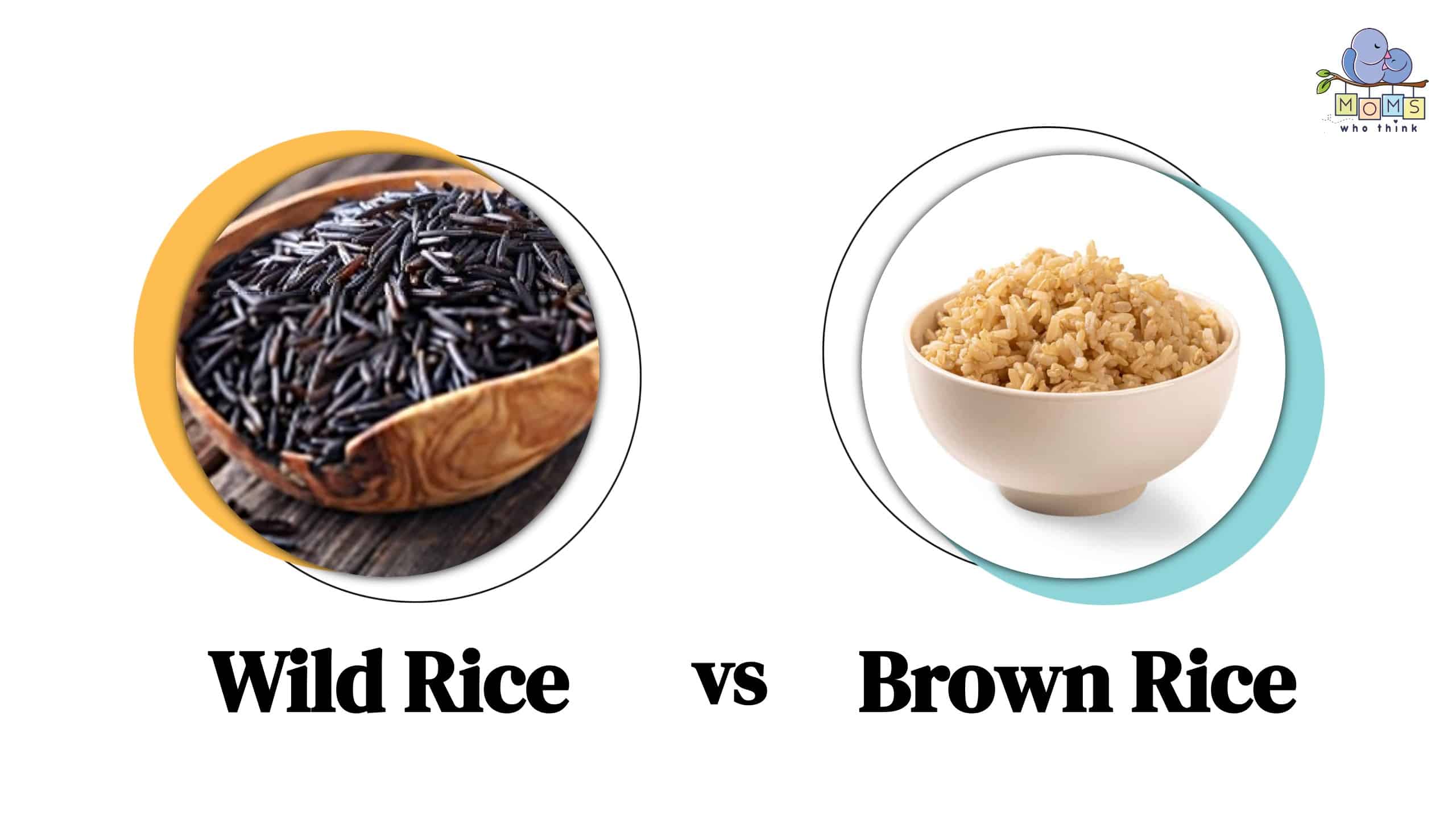White rice is perhaps the most common rice, and you probably have some in your pantry right now, but there are many other types of rice to explore. Jasmine rice gets a lot of attention for being fragrant, basmati rice is the darling in the world of curries, and black rice is just plain unique. But brown rice and wild rice are often overlooked. Brown rice has a reputation for being plain and is often associated with healthy foods like tofu and miso, while wild rice can be intimidating for many home chefs. But these two types of rice deserve some attention, too. They are both easy to make, healthier than plain white rice, and just as versatile. But when it comes to wild rice vs. brown rice, these healthy types of rice have a few key differences.
Wild Rice vs. Brown Rice: Key Nutritional Differences
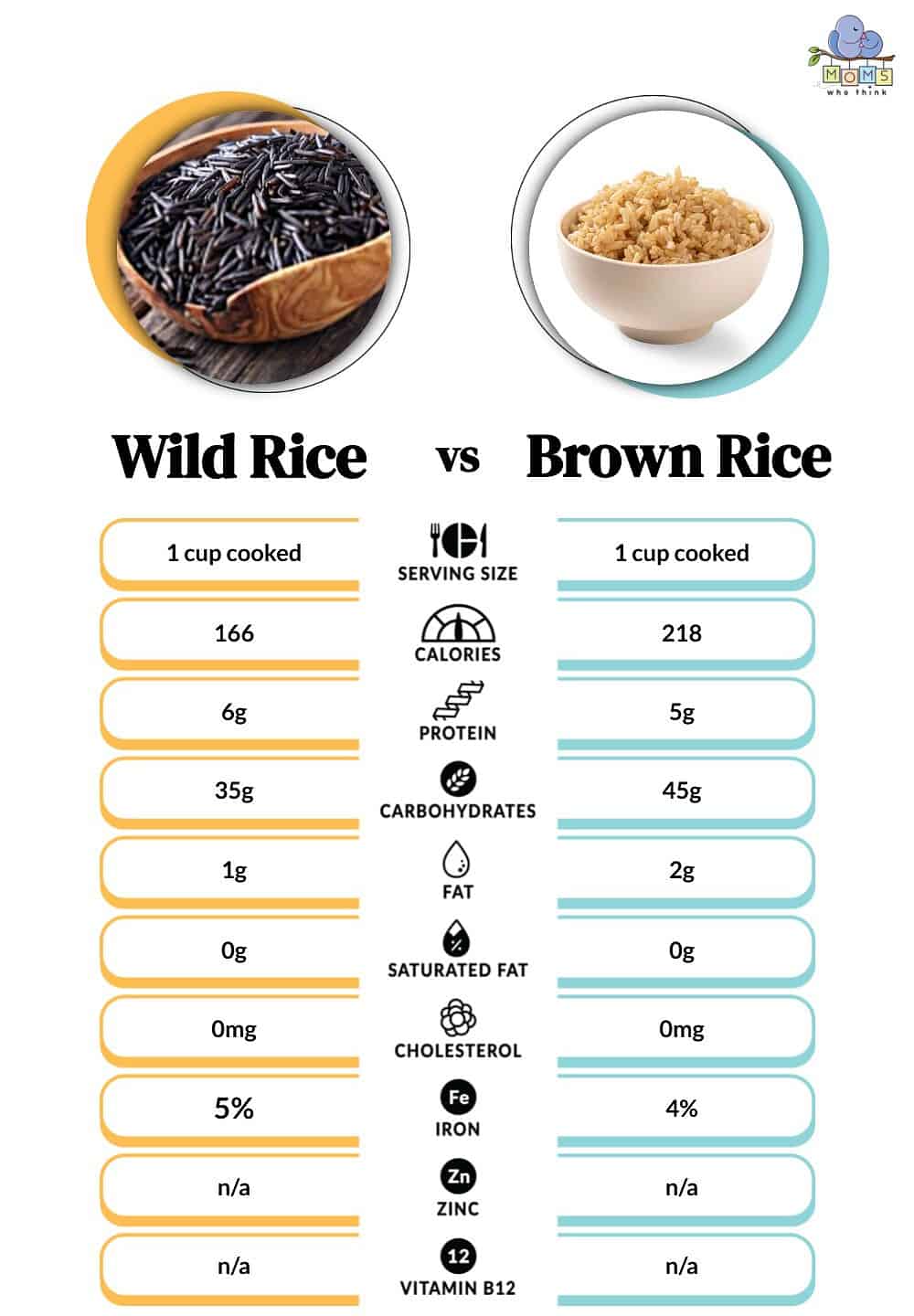
©
If you are looking for a healthier alternative to white rice, you should check out wild and brown rice. Wild rice is lower in calories, carbohydrates, and fat than brown rice, but not by much. One cup of wild rice has 166 calories, while one cup of brown rice has 218. But both are fairly high in carbs, so that they wouldn't be a good option for people following a low-carb or keto diet.
If we look at vitamins and minerals, the two kinds of rice both have a lot going for them. Wild rice is rich in antioxidants, which are important for a healthy immune system. Plus, it has magnesium, selenium, folate, and zinc. Healthline explains that while wild rice doesn't have a lot of protein, it does have all nine essential amino acids, making it a complete plant protein.
Brown rice has a lot to offer, too. It is an excellent source of folate, B2, calcium, and potassium. According to Healthline, it's also a good source of manganese. Unless you are a nutritionist, you might not have heard of manganese, but it has an important function in the body, and low levels of this are linked to low fertility. So, if you are trying to conceive, you might want to add more brown rice to your diet.
Wild Rice vs. Brown Rice: Gluten and Fiber
When it comes to fiber, wild rice and brown rice are excellent choices. Fiber makes us feel full and hopefully eat less, which is good news for anyone seeking to shed some weight. Both are gluten-free, making them safe for people who follow a gluten-free diet or who have Celiac. Of course, you should always check labels as sometimes, naturally gluten-free items are processed in the same place as gluten products.
Wild Rice vs. Brown Rice: Taste Differences
Both types of rice have a different, chewy, almost meatier texture than white rice. But the real difference is the taste. Wild rice tastes nutty and earthy or even grassy. In contrast, brown rice has a more neutral taste with a chewy bite. If you were to do a blind taste test between the two, the texture would stand out more than the taste. Wild rice has a longer grain and an almost crunchy, chewy bite, and brown rice is less chewy than wild rice but denser than white rice. The earthy umami taste of wild rice is often paired with other umami-rich ingredients like mushrooms or beef. And brown rice is often used the same way white rice is used.
What is Wild Rice?
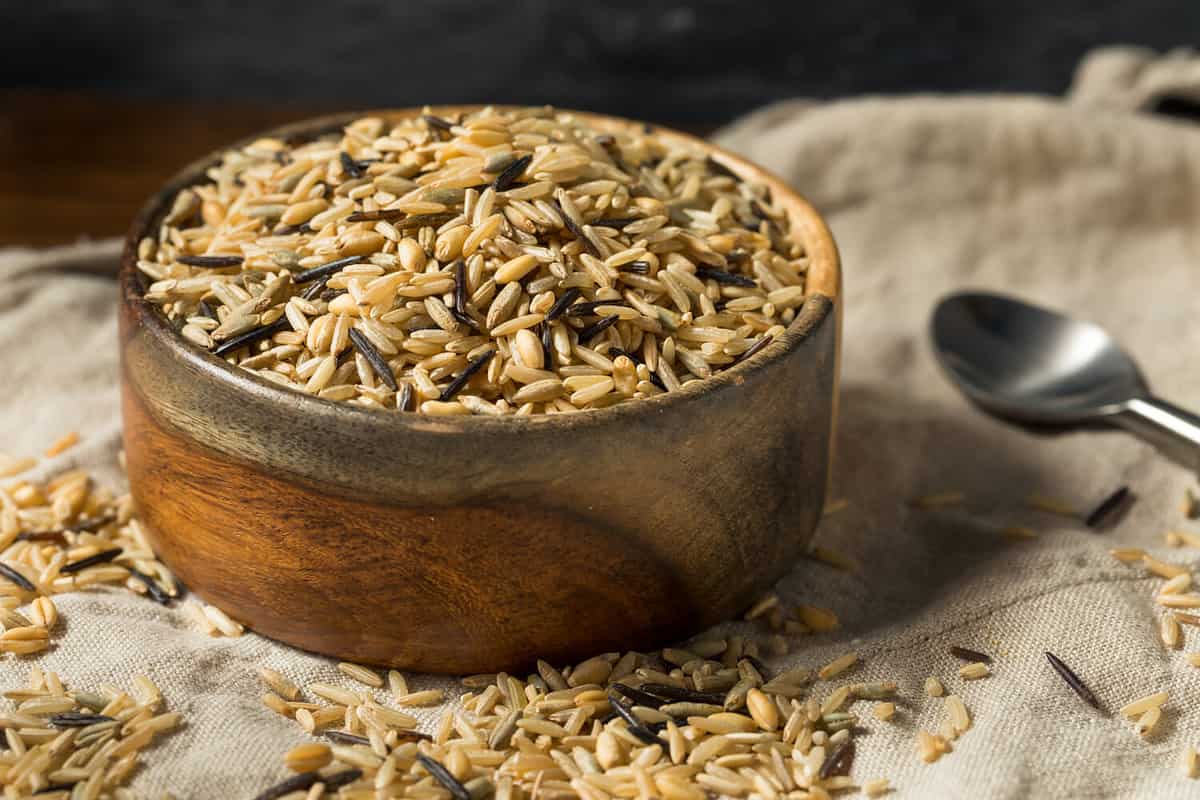
©Brent Hofacker/Shutterstock.com
The name wild rice is a bit of false advertising because it isn't actually rice. It is seeds from four different tall aquatic grasses. Wild rice has been around for a long time; it was a staple in the native American diet and is indigenous to the Great Lakes area. Despite the word wild in its name, it is mostly cultivated. So not only is it not technically rice, but it is not technically wild either. But “domesticated seeds” doesn't quite have a nice ring to it, so we will keep calling it wild rice. Interestingly, in China, wild rice is grown for the stalk, which is cooked like a vegetable. In the U.S., the stalk is overlooked for the seeds.
You may have noticed the price tag of wild rice is much higher than for other types of rice because the growing and harvesting of wild rice is more labor intensive, resulting in a higher cost for consumers. Due to the high cost of packaged wild rice, many consumers who love its taste and texture buy it from the bulk bins. These bulk bins are generally fine, but wild rice can get a toxic fungus called ergot. Luckily, it isn't too common and is easy to spot with the naked eye. The spots are a pinkish-purplish color. Make sure to always rinse your rice before cooking and check for any spots.
What is Brown Rice?
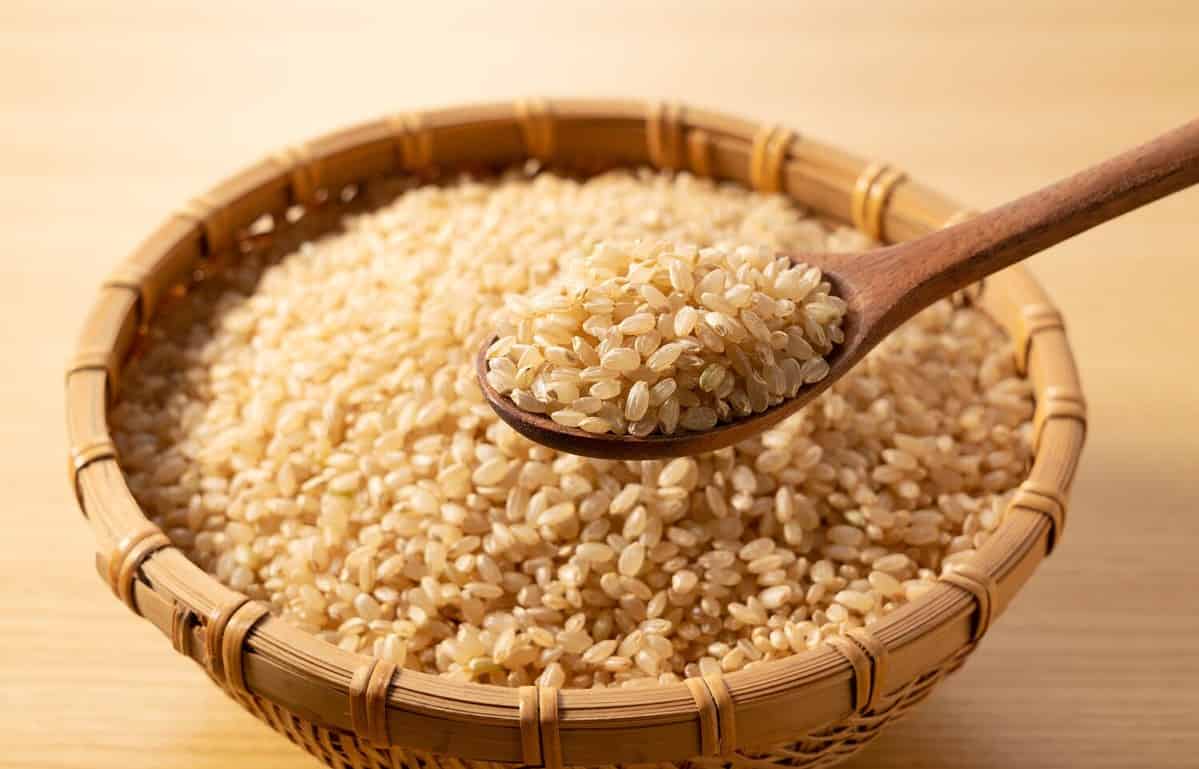
Brown rice has a mild and nutty flavor.
©masa44/Shutterstock.com
Brown rice is rice that still has the germ and bran layer. In comparison, white rice does not have those intact. The germ and bran layer makes brown rice sturdier than white rice, which gives it a chewy, thick texture. Initially, brown rice wasn't as popular as white rice; not everybody was a fan of the texture. And while brown rice is a good alternative to white rice in some dishes, it isn't ideal in risotto or rice-based desserts.
Notably, brown rice was part of the counter-culture revolution in the 1970s. At a time when people were just starting to be aware of chemicals and additives in foods, there was a movement of young people looking to eat whole grains and adopt a vegetarian lifestyle. And for them, brown rice was a good alternative to processed foods. Brown rice had an early reputation as a hippie food only found in early health food stores. In the book “Hippi Food: How the Back-to-Lander, Longhairs, and Revolutionaries Changed the Way We Eat,” the author Jonathan Kauffman explains that during this time, the counterculture perspective was that eating should be a political act and that eating brown rice, tofu, and miso was going against societal norms. These days, eating healthy is more about self-care than politics, and brown rice is found in every supermarket.
How to Make and Use Wild Rice
Wild rice is easy to cook on the stove pot. Since wild rice has a hard outer shell, the cooking ratio is three-to-one, meaning three cups of water to one cup of rice. Start by rinsing the rice, adding it to the water, and bringing it to a boil. Then turn down the heat to a simmer and cover for 45 minutes to an hour. You have to keep an eye on it and test it towards the end. It should have a slight bite but not be crunchy. In some cases, you may need to add more water, and then once the texture is right, drain the excess water. It is difficult to give exact timing for cooking wild rice because there are many different varieties, and some need more cooking time than others. Be careful when cooking because burning rice will ruin a pan.
Now, what to do with a pile of cooked wild rice? Well, you can do a lot of things. You can serve it as a side dish and on top of salads, and it's great in soups, stuffings, and casseroles. If you want to make rice pilaf with wild rice, first you need to saute it with some butter and aromatics, then add it to boiling water or broth and cook until soft.
How to Make and Use Brown Rice
Let's say this upfront before you get started: Brown rice takes longer to cook than white rice. It doesn't matter if you use the stovetop, instant pot, rice cooker, or crockpot; it just takes longer. Start by rinsing the rice and using the two-to-one ratio, two parts water or broth to one part rice. Bring it to a boil, then turn the heat down to a simmer and cook for between 45 minutes to an hour. Next, turn off the burner and let it sit for ten minutes. You can then use it in your favorite recipe.
You can use brown rice in anything you would normally use white rice, like stir-fries, curries, burritos, buddha bowls. It is also good for making vegetarian meatballs, meatloaf, and veggie burgers.
Recipe Card
Now that you know the difference between wild rice and brown rice, try a delicious yet simple recipe. While this recipe calls for brown rice, wild rice would also work perfectly fine. Enjoy!
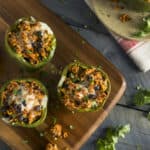
Healthy Stuffed Peppers with Brown Rice
Ingredients
- 4 to 6 large green bell peppers
- 1 pound ground beef
- 1 small onion, finely chopped
- 1 (20 ounce) can smashed tomatoes
- 2 Tablespoons Worcestershire sauce
- Salt and pepper, to taste
- 1 to 1 1/2 cups cooked brown rice
- 1 cup shredded cheddar cheese
- Grated parmesan cheese
Instructions
- Cut tops off bell peppers and remove seeds. Parboil in salted, boiling water for 4 minutes. Drain and cool.
- Brown meat in a skillet with onion. Drain oil.
- Add tomatoes, Worcestershire, salt, and pepper to the skillet. Simmer for 15 to 20 minutes.
- Add rice. Simmer, stirring occasionally, for 10 minutes. Remove from heat.
- Add cheddar cheese, stirring until melted and well blended.
- Stuff mixture into peppers, and top with Parmesan cheese.
- Bake at 350 degrees for about 20 minutes or until hot.
Notes
If freezing the stuffed peppers, do not bake them first. Wrap individually and place in a large freezer bag. Thaw well before baking.
